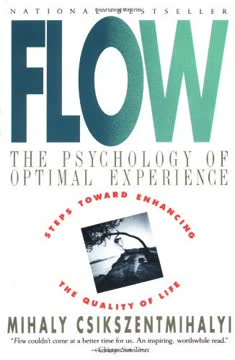النقاط الرئيسية
1. القراءة والاستماع في آن واحد أمر مستحيل: اختر واحدة للتواصل الفعال
"من المستحيل فهم شيء تقرأه بينما تحاول في الوقت نفسه فهم صوت تستمع إليه."
اختناق بروكا/فيرنيك يفسر لماذا لا يمكننا معالجة اللغة المكتوبة والم spoken في آن واحد. هذه الشبكة العصبية، الموجودة في جانب واحد من الدماغ، يمكنها التعامل مع تيار واحد من المعلومات اللغوية في كل مرة. عند محاولة القراءة والاستماع في الوقت نفسه، نقوم بالتبديل بسرعة بين الاثنين، مما يؤدي إلى فقدان معلومات أساسية من كل منهما.
تداعيات التواصل:
- تجنب الشرائح الثقيلة بالنصوص خلال العروض التقديمية
- توزيع الملاحظات التفصيلية بعد، وليس أثناء، العروض
- عند حضور عروض تقديمية تحتوي على شرائح نصية كثيفة، ركز على المتحدث
من خلال اختيار إما التواصل الشفهي أو المكتوب، نضمن أن جمهورنا يمكنه معالجة المعلومات التي نشاركها والاحتفاظ بها بشكل كامل.
2. دمج الكلام مع الصور ذات الصلة لتعزيز التعلم والذاكرة
"يمكن أن يكون الصوت والصور معًا تجربة متجاوزة."
الاندماج الحسي يسمح لعقولنا بمعالجة المعلومات البصرية والسمعية في آن واحد، على عكس النص والكلام. هذا الاندماج يخلق تجربة تعلم أكثر شمولاً وذكراً.
فوائد دمج الكلام مع الصور:
- يحسن الفهم والاحتفاظ بنسبة تصل إلى 20%
- يعزز تفاعل الجمهور واستقباله
- يجعل المقدم يبدو أكثر احترافية وجاذبية
اعتبارات رئيسية:
- استخدم صورة معقدة واحدة لكل شريحة، وليس عدة صور
- تأكد من أن الصور ذات صلة بالمحتوى الذي يتم مناقشته
- كن حذرًا مع الرسوم البيانية والجداول، حيث تتطلب المزيد من وقت المعالجة
3. تخفيض تخطيطات الفضاء المتسقة يقلل من الحمل المعرفي ويحسن الاحتفاظ
"عندما يمكنك التنبؤ بدقة بمكان ظهور المعلومات ذات الصلة، فإنك تبذل وقتًا وطاقة أقل في تفسير تلك المعلومات."
التوجيه السياقي يسمح لعقولنا بتشكيل توقعات حول مكان ظهور المعلومات، مما يقلل من الجهد المعرفي المطلوب لمعالجتها. هذا يحرر الموارد العقلية للانخراط بشكل أعمق مع المحتوى.
التطبيقات العملية:
- الحفاظ على تنسيق متسق في الشرائح والمستندات
- استخدام تخطيط متوقع لمواقع الويب والتطبيقات
- الحفاظ على منظور متسق في العروض التقديمية بالفيديو
ومع ذلك، كن واعيًا أنه في الحالات التي تكون فيها الرضا الزائد مصدر قلق (مثل قوائم التحقق من السلامة)، يمكن أن تساعد التخطيطات المتنوعة في الحفاظ على الانتباه والانخراط.
4. السياق والحالة العاطفية تؤثر بشكل كبير على نتائج التعلم
"المكان الذي نتعلم فيه يشكل جانبًا أساسيًا مما نتعلمه في النهاية."
التعلم المعتمد على السياق يفسر لماذا يكون من الأسهل غالبًا استرجاع المعلومات في البيئة التي تم تعلمها فيها في البداية. هذه الظاهرة تمتد إلى ما هو أبعد من المحيطات المادية لتشمل الحالات الداخلية، مثل المشاعر والتأثيرات الكيميائية (مثل الكافيين، الكحول).
استراتيجيات للاستفادة من الاعتماد على السياق:
- مطابقة بيئات التدريب مع بيئات الأداء عند الإمكان
- لممارسات مرنة، التدرب في سياقات متنوعة
- كن واعيًا للحالة العاطفية أثناء التعلم وتأثيرها المحتمل على الاسترجاع
لخلق ذكريات أكثر وصولاً بشكل عالمي، عرّض المتعلمين لنفس المعلومات عبر سياقات وحالات عاطفية متنوعة.
5. تعدد المهام يعيق التعلم: ركز على مهمة واحدة في كل مرة
"على الرغم من أننا غالبًا ما نعتقد أننا نقوم بتعدد المهام، إلا أننا لا نقوم أبدًا بأداء مهام متعددة في آن واحد. بل، نحن نتنقل بسرعة بين المهام، متبادلين مجموعات القواعد داخل LatPFC في كل مرة نقوم بذلك."
تبديل المهام، الذي يُخطأ غالبًا في اعتباره تعدد المهام، يأتي مع ثلاثة تكاليف رئيسية:
- الوقت: تحدث ومضات انتباه قصيرة خلال كل تبديل
- الدقة: فترة استجابة نفسية تؤدي إلى تدهور الأداء
- الذاكرة: انخفاض نشاط الحُُُُُُُُُُُُُُُُُُُُُُُُُُُُُُُُُُُُُُُُُُُُُُُُُُُُُُُُُُُُُُُُُُُُُُُُُُُُُُُُُُُُُُُُُُُُُُُُُُُُُُُُُُُُُُُُُُُُُُُُُُُُُُُُُُُُُُُُُُُُُُُُُُُُُُُُُُُُُُُُُُُُُُُُُُُُُُُُُُُُُُُُُُُُُُُُُُُُُُُُُُُُُُُُُُُُُُُُُُُُُُُُُُُُُُُُُُُُُُُُُُُُُُُُُُُُُُُُُُُُُُُُُُُُُُُُُُُُُُُُُُُُُُُُُُُُُُُُُُُُُُُُُُُُُُُُُُُُُُُُُُُُُُُُُُُُُُُُُُُُُُُُُُُُُُُُُُُُُُُُُُُُُُُُُُُُُُُُُُُُُُُُُُُُُُُُُُُُُُُُُُُُُُُُُُُُُُُُُُُُُُُُُُُُُُُُُُُُُُُُُُُُُُُُُُُُُُُُُُُُُُُُُُُُُُُُُُُُُُُُُُُُُُُُُُُُُُُُُُُُُُُُُُُُُُُُُُُُُُُُُُُُُُُُُُُُُُُُُُُُُُُُُُُُُُُُُُُُُُُُُُُُُُُُُُُُُُُُُُُُُُُُُُُُُُُُُُُُُُُُُُُُُُُُُُُُُُُُُُُُُُُُُُُُُُُُُُُُُُُُُُُُُُُُُُُُُُُُُُُُُُُُُُُُُُُُُُُُُُُُُُُُُُُُُُُُُُُُُُُُُُُُُُُُُُُُُُُُُُُُُُُُُُُُُُُُُُُُُُُُُُُُُُُُُُُُُُُُُُُُُُُُُُُُُُُُُُُُُُُُُُُُُُُُُُُُُُُُُُُُُُُُُُُُُُُُُُُُُُُُُُُُُُُُُُُُُُُُُُُُُُُُُُُُُُُُُُُُُُُُُُُُُُُُُُُُُُُُُُُُُُُُُُُُُُُُُُُُُُُُُُُُُُُُُُُُُُُُُُُُُُُُُُُُُُُُُُُُُُُُُُُُُُُُُُُُُُُُُُُُُُُُُُُُُُُُُُُُُُُُُُُُُُُُُُُُُُُُُُُُُُُُُُُُُُُُُُُُُُُُُُُُُُُُُُُُُُُُُُُُُُُُُُُُُُُُُُُُُُُُُُُُُُُُُُُُُُُُُُُُُُُُُُُُُُُُُُُُُُُُُُُُُُُُُُُُُُُُُُُُُُُُُُُُُُُُُُُُُُُُُُُُُُُُُُُُُُُُُُُُُُُُُُُُُُُُُُُُُُُُُُُُُُُُُُُُُُُُُُُُُُُُُُُُُُُُُُُُُُُُُُُُُُُُُُُُُُُُُُُُُُُُُُُُُُُُُُُُُُُُُُُُُُُُُُُُُُُُُُُُُُُُُُُُُُُُُُُُُُُُُُُُُُُُُُُُُُُُُُُُُُُُُُُُُُُُُُُُُُُُُُُُُُُُُُُُُُُُُُُُُُُُُُُُُُُُُُُُُُُُُُُُُُُُُُُُُُُُُُُُُُُُُُُُُُُُُُُُُُُُُُُُُُُُُُُُُُُُُُُُُُُُُُُُُُُُُُُُُُُُُُُُُُُُُُُُُُُُُُُُُُُُُُُُُُُُُُُُُُُُُُُُُُُُُُُُُُُُُُُُُُُُُُُُُُُُُُُُُُُُُُُُُُُُُُُُُُُُُُُُُُُُُُُُُُُُُُُُُُُُُُُُُُُُُُُُُُُُُُُُُُُُُُُُُُُُُُُُُُُُُُُُُُُُُُُُُُُُُُُُُُُُُُُُُُُُُُُُُُُُُُُُُُُُُُُُُُُُُُُُُُُُُُُُُُُُُُُُُُُُُُُُُُُُُُُُُُُُُُُُُُُُُُُُُُُُُُُُُُُُُُُُُُُُُُُُُُُُُُُُُُُُُُُُُُُُُُُُُُُُُُُُُُُُُُُُُُُُُُُُُُُُُُُُُُُُُُُُُُُُُُُُُُُُُُُُُُُُُُُُُُُُُُُُُُُُُُُُُُُُُُُُُُُُُُُُُُُُُُُُُُُُُُُُُُُُُُُُُُُُُُُُُُُُُُُُُُُُُُُُُُُُُُُُُُُُُُُُُُُُُُُُُُُُُُُُُُُُُُُُُُُُُُُُُُُُُُُُُُُُُُُُُُُُُُُُُُُُُُُُُُُُُُُُُُُُُُُُُُُُُُُُُُُُُُُُُُُُُُُُُُُُُُُُُُُُُُُُُُُُُُُُُُُُُُُُُُُُُُُُُُُُُُُُُُُُُُُُُُُُُُُُُُُُُُُُُُُُُُُُُُُُُُُُُُُُُُُُُُُُُُُُُُُُُُُُُُُُُُُُُُُُُُُُُُُُُُُُُُُُُُُُُُُُُُُُُُُُُُُُُُُُُُُُُُُُُُُُُُُُُُُُُُُُُُُُُُُُُُُُُُُُُُُُُُُُُُُُُُُُُُُُُُُُُُُُُُُُُُُُُُُُُُُُُُُُُُُُُُُُُُُُُُُُُُُُُُُُُُُُُُُُُُُُُُُُُُُُُُُُُُُُُُُُُُُُُُُُُُُُُُُُُُُُُُُُُُُُُُُُُُُُُُُُُُُُُُُُُُُُُُُُُُُُُُُُُُُُُُُُُُُُُُُُُُُُُُُُُُُُُُُُُُُُُُُُُُُُُُُُُُُُُُُُُُُُُُُُُُُُُُُُُُُُُُُُُُُُُُُُُُُُُُُُُُُُُُُُُُُُُُُُُُُُُُُُُُُُُُُُُُُُُُُُُُُُُُُُُُُُُُُُُُُُُُُُُُُُُُُُُُُُُُُُُُُُُُُُُُُُُُُُُُُُُُُُُُُُُُُُُُُُُُُُُُُُُُُُُُُُُُُُُُُُُُُُُُُُُُُُُُُُُُُُُُُُُُُُُُُُُُُُُُُُُُُُُُُُُُُُُُُُُُُُُُُُُُُُُُُُُُُُُُُُُُُُُُُُُُُُُُُُُُُُُُُُُُُُُُُُُُُُُُُُُُُُُُُُُُُُُُُُُُُُُُُُُُُُُُُُُُُُُُُُُُُُُُُُُُُُُُُُُُُُُُُُُُُُُُُُُُُُُُُُُُُُُُُُُُُُُُُُُُُُُُُُُُُُُُُُُُُُُُُُُُُُُُُُُُُُُُُُُُُُُُُُُُُُُُُُُُُُُُُُُُُُُُُُُُُُُُُُُُُُُُُُُُُُُُُُُُُُُُُُُُُُُُُُُُُُُُُُُُُُُُُُُُُُُُُُُُُُُ
آخر تحديث::
FAQ
What's "Stop Talking, Start Influencing" about?
- Author and Purpose: Written by Jared Cooney Horvath, the book explores how insights from brain science can enhance communication and teaching effectiveness.
- Core Focus: It provides 12 brain science-based insights to help make messages more memorable and impactful.
- Target Audience: The book is aimed at anyone involved in teaching, coaching, or presenting, including educators, trainers, and business professionals.
Why should I read "Stop Talking, Start Influencing"?
- Practical Applications: The book offers actionable strategies to improve how you convey information and influence others.
- Scientific Foundation: It is grounded in well-researched neuroscience, providing evidence-based techniques.
- Broad Relevance: Whether you're a teacher, coach, or business leader, the insights can be applied across various fields to enhance learning and communication.
What are the key takeaways of "Stop Talking, Start Influencing"?
- Text and Speech: Avoid using text-heavy slides during presentations to prevent cognitive overload.
- Images and Speech: Use images to complement speech, as they can enhance memory and understanding.
- Distributed Practice: Spacing out learning sessions over time improves retention and understanding.
How does Jared Cooney Horvath suggest using images in presentations?
- Complement Speech: Images should be used to support and enhance the spoken message, not distract from it.
- Limit Quantity: Avoid cluttering slides with too many images; one impactful image per slide is often sufficient.
- Relevance Matters: Ensure images are relevant to the content to aid comprehension and retention.
What is the "Broca/Wernicke bottleneck" mentioned in the book?
- Definition: The Broca/Wernicke bottleneck refers to the brain's limitation in processing multiple streams of verbal information simultaneously.
- Implication for Presentations: This bottleneck explains why audiences struggle to read text on slides while listening to a speaker.
- Practical Advice: To avoid this issue, minimize text on slides and focus on verbal delivery.
How does "Stop Talking, Start Influencing" address multitasking?
- Myth of Multitasking: The book argues that true multitasking is a myth; instead, people rapidly switch between tasks.
- Impact on Performance: Task-switching can lead to decreased accuracy, increased time, and impaired memory.
- Recommendation: Focus on one task at a time to improve efficiency and effectiveness.
What is the role of "interleaving" in learning, according to the book?
- Definition: Interleaving involves mixing different topics or skills during practice rather than focusing on one at a time.
- Benefits: This approach helps prevent the formation of rigid "chunks" and enhances the ability to apply skills flexibly.
- Application: Use interleaving in practice sessions to improve performance and adaptability in real-world scenarios.
How does Jared Cooney Horvath suggest handling errors in learning?
- Error as a Learning Tool: Errors should be embraced as opportunities for learning and growth.
- Error Analysis Process: The book outlines a four-stage process: awareness, categorization, correction, and autonomy.
- Cultural Shift: Encourage a culture that views errors as a natural part of the learning process rather than something to be avoided.
What is the significance of "recall" in memory retention?
- Key to Deep Memory: Recall is crucial for forming deep, lasting memories, more so than mere review or recognition.
- Association Networks: Recall strengthens association networks, making information easier to access in the future.
- Practical Application: Incorporate recall activities into learning sessions to enhance memory retention.
How does "Stop Talking, Start Influencing" define "priming"?
- Definition: Priming involves activating specific associations in the brain to influence how new information is perceived and understood.
- Types of Priming: The book discusses concept, expectancy, and strategy priming as methods to guide comprehension and behavior.
- Use in Communication: Priming can be used to set the stage for how an audience will receive and interpret information.
What are the best quotes from "Stop Talking, Start Influencing" and what do they mean?
- "We don’t think about the things we remember; we remember the things we think about." This highlights the importance of active engagement and recall in memory retention.
- "The dose makes the poison." This quote underscores the idea that moderate stress can enhance learning, while too much or too little can be detrimental.
- "Disconnected facts in the mind are like unlinked pages on the web: they might as well not exist." It emphasizes the need for connecting information meaningfully to enhance understanding and recall.
How does stress affect learning according to Jared Cooney Horvath?
- Inverted U Principle: Moderate stress can enhance learning, while too much or too little stress can impair it.
- Chemical Response: Stress triggers the release of hormones that can either strengthen or weaken memory, depending on the level of stress.
- Practical Implication: Manage stress levels in learning environments to optimize memory and performance.
مراجعات
كتاب "توقف عن الحديث، وابدأ في التأثير" يحظى بتقييمات إيجابية للغاية، حيث يثني القراء على محتواه الجذاب ورؤاه العملية حول التعلم والذاكرة. يبرز الكثيرون أساسه العلمي في علم الأعصاب وشرحه السهل الفهم. يقدّر المراجعون النهج التفاعلي للكتاب، مما يجعله تجربة بدلاً من مجرد قراءة. يجد المعلمون والمقدمون أنه ذو قيمة خاصة لتحسين أساليبهم. كما يُشاد بالكتاب لتنظيمه الواضح، والأمثلة المفيدة، والاستراتيجيات القابلة للتطبيق التي يمكن استخدامها في سياقات متنوعة، بدءًا من التعليم وصولاً إلى العروض التجارية.
Similar Books











